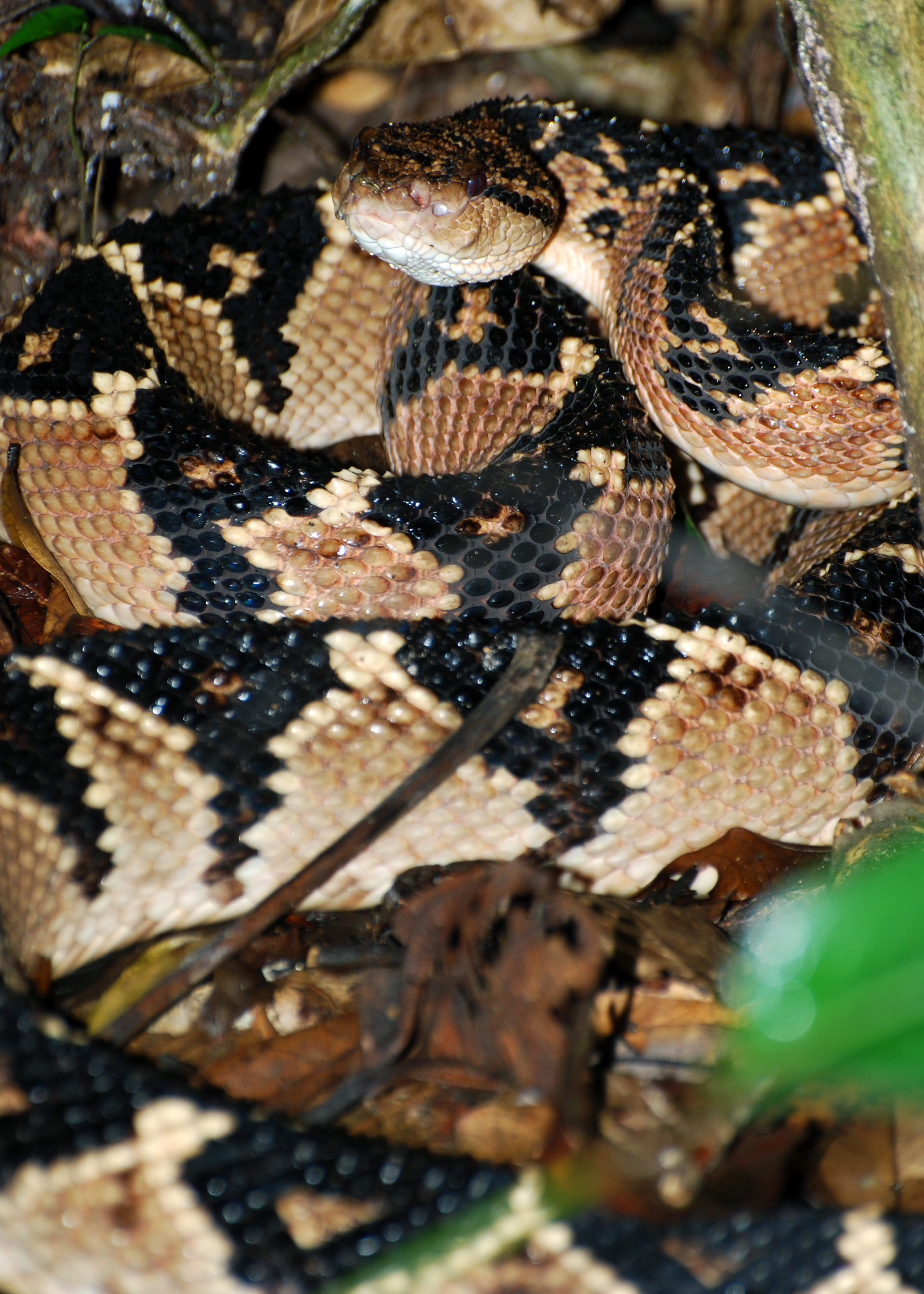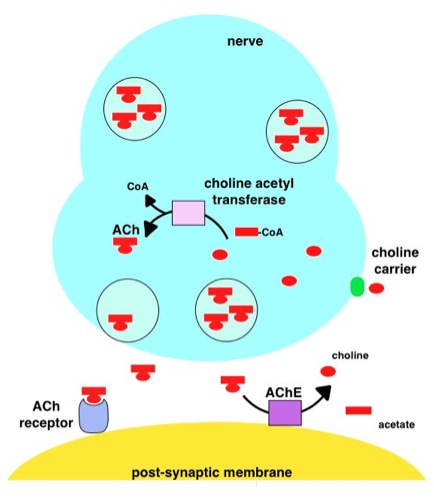|
Crotalinae
The Crotalinae, commonly known as pit vipers,Mehrtens JM (1987). ''Living Snakes of the World in Color''. New York: Sterling Publishers. 480 pp. . or pit adders, are a subfamily of vipers found in Asia and the Americas. Like all other vipers, they are venomous. They are distinguished by the presence of a heat-sensing pit organ located between the eye and the nostril on both sides of the head. Currently, 23 genera and 155 species are recognized: These are also the only viperids found in the Americas. The groups of snakes represented here include rattlesnakes, lanceheads, and Asian pit vipers. The type genus for this subfamily is '' Crotalus'', of which the type species is the timber rattlesnake, ''C. horridus''. These snakes range in size from the diminutive hump-nosed viper, '' Hypnale hypnale'', that grows to a typical total length (including tail) of only , to the bushmaster, '' Lachesis muta'', a species known to reach a maximum total length of in length. This subf ... [...More Info...] [...Related Items...] OR: [Wikipedia] [Google] [Baidu] |
Infrared Sensing In Snakes
The ability to sense infrared thermal radiation evolved independently in three different groups of snakes, consisting of the families of Boidae (boas), Pythonidae (pythons), and the subfamily Crotalinae (pit vipers). What is commonly called a pit organ allows these animals to essentially "see" radiant heat at wavelengths between 5 and 30 μm. The more advanced infrared sense of pit vipers allows these animals to strike prey accurately even in the absence of light, and detect warm objects from several meters away. It was previously thought that the organs evolved primarily as prey detectors, but recent evidence suggests that it may also be used in thermoregulation and predator detection, making it a more general-purpose sensory organ than was supposed.Greene HW. 1992. The ecological and behavioral context for pitviper evolution. ''In'' Campbell JA, Brodie ED Jr. 1992. Biology of the Pitvipers. Texas: Selva. 467 pp. 17 plates. . Phylogeny and evolution The facial pit underwe ... [...More Info...] [...Related Items...] OR: [Wikipedia] [Google] [Baidu] |
Rattlesnake
Rattlesnakes are venomous snakes that form the genus, genera ''Crotalus'' and ''Sistrurus'' of the subfamily Crotalinae (the pit vipers). All rattlesnakes are vipers. Rattlesnakes are predators that live in a wide array of habitats, hunting small animals such as birds and rodents. Rattlesnakes receive their name from the #Rattle, rattle located at the end of their tails, which makes a loud rattling noise when tail vibration, vibrated that deters predators. Rattlesnakes are the leading contributor to snakebite injuries in North America, but rarely bite unless provoked or threatened; if treated promptly, the bites are seldom fatal. The 36 known List of rattlesnake species and subspecies, species of rattlesnakes have between 65 and 70 subspecies, all native to the Americas, ranging from central Argentina to southern Canada. The largest rattlesnake, the Eastern diamondback rattlesnake, eastern diamondback, can measure up to in length. Rattlesnakes are preyed upon by hawks, wease ... [...More Info...] [...Related Items...] OR: [Wikipedia] [Google] [Baidu] |
Lachesis Muta
''Lachesis muta'', also known as the Southern American bushmaster or Atlantic bushmaster, is a pit viper species found in South America, as well as the island of Trinidad in the Caribbean. Two subspecies are currently recognized, including the nominate subspecies described here. Taxonomy Two additional subspecies, ''L. m. melanocephala'' and ''L. m. stenophrys'', had earlier been recognized. However, both were elevated to species level by Zamudio and Green in 1997 (see '' L. melanocephala'' and '' L. stenophrys''). Subspecies Description Adults grow to an average of 2 to 2.5 m (6½-8 feet), although 3 m (10 feet) is not too unusual. The largest recorded specimen was 3.65 m (almost 12 feet) long, making the species the largest of all vipers and the longest venomous snake in the Western Hemisphere.Mehrtens JM (1987). ''Living Snakes of the World in Color''. New York: Sterling Publishers. 480 pp. . ''Lachesis muta'' is the third longest venomous snake in the world, exce ... [...More Info...] [...Related Items...] OR: [Wikipedia] [Google] [Baidu] |
Nicolaus Michael Oppel
Nicolaus Michael Oppel (December 7, 1782 in Schönficht – February 16, 1820 in Munich) was a German naturalist. He was a student of, and worked as an assistant to, André Marie Constant Duméril (1774-1860) at the Muséum national d'histoire naturelle in Paris, France, cataloging and classifying species of reptiles. In 1811, he published a book entitled ''Die Ordnungen, Familien und Gattungen der Reptilien als Prodrom einer Naturgeschichte derselben'', or "The Orders, Families, and Types of Reptiles..." in which he established the order, Squamata, and the families Cheloniidae, Colubridae, and the subfamily Crotalinae, as well as several genera which are still in use by taxonomists today. With Friedrich Tiedemann (1781-1861) and Joseph Liboschitz (1783-1824), he was co-author of ''Naturgeschichte der Amphibien'' (Natural history of amphibians Amphibians are ectothermic, anamniote, anamniotic, tetrapod, four-limbed vertebrate animals that constitute the class (biology), ... [...More Info...] [...Related Items...] OR: [Wikipedia] [Google] [Baidu] |
Timber Rattlesnake
The timber rattlesnake (''Crotalus horridus''), also known Common name, commonly as the canebrake rattlesnake and the banded rattlesnake,Albert Hazen WWright AH, species:Anna Allen WWright AA (1957). ''Handbook of Snakes of the United States and Canada''. Ithaca and London: Comstock Publishing Associates, a division of Cornell University Press. (7th printing, 1985). 1,105 pp. (in two volumes). . (''Crotalus horridus'', pp. 956–966.) is a species of Crotalinae, pit viper in the Family (biology), family Viperidae. The species is native to the eastern United States. Like all other pit vipers, it is Venomous snake, venomous, with a very toxic bite. Its venom is extremely potent, both hemorrhagic and neurotoxic venom are present depending on population and location. ''C. horridus'' is the only rattlesnake species in most of the populous Northeastern United States and is second only to its relatives to the west, the Crotalus viridis, prairie rattlesnake, as the most northerly distri ... [...More Info...] [...Related Items...] OR: [Wikipedia] [Google] [Baidu] |
Venomous Snake
''Venomous snakes'' are species of the suborder Serpentes that are capable of producing venom, which they use for killing prey, for defense, and to assist with digestion of their prey. The venom is typically delivered by injection using hollow or grooved fangs, although some venomous snakes lack well-developed fangs. Common venomous snakes include the families Elapidae, Viperidae, Atractaspididae, and some of the Colubridae. The toxicity of venom is mainly indicated by murine , while multiple factors are considered to judge the potential danger to humans. Other important factors for risk assessment include the likelihood that a snake will bite, the quantity of venom delivered with the bite, the efficiency of the delivery mechanism, and the location of a bite on the body of the victim. Snake venom may have both neurotoxic and hemotoxic properties. There are about 600 venomous snake species in the world. Evolution The evolutionary history of venomous snakes can be traced back ... [...More Info...] [...Related Items...] OR: [Wikipedia] [Google] [Baidu] |
Viperidae
Vipers are snakes in the family Viperidae, found in most parts of the world, except for Antarctica, Australia, Hawaii, Madagascar, New Zealand, Ireland, and various other isolated islands. They are venomous snake, venomous and have long (relative to non-vipers), hinged fangs that permit deep envenomation of their prey. Three subfamilies are currently recognized. They are also known as viperids. The name "viper" is derived from the Latin word ''vipera'', -''ae'', also meaning viper, possibly from ''vivus'' ("living") and ''parere'' ("to beget"), referring to the trait viviparity (giving live birth) common in vipers like most of the species of Boidae. The earliest known vipers are believed to have diverged from the rest of the clade Caenophidia in the early Eocene. Description All viperids have a pair of relatively long Solenoglypha#Solenoglyph, solenoglyphous (hollow) fangs that are used to inject venom from glands located towards the rear of the upper jaws, just behind the ey ... [...More Info...] [...Related Items...] OR: [Wikipedia] [Google] [Baidu] |
Acetylcholine Esterase
Acetylcholinesterase ( HGNC symbol ACHE; EC 3.1.1.7; systematic name acetylcholine acetylhydrolase), also known as AChE, AChase or acetylhydrolase, is the primary cholinesterase in the body. It is an enzyme that catalyzes the breakdown of acetylcholine and some other choline esters that function as neurotransmitters: : acetylcholine + H2O = choline + acetate It is found at mainly neuromuscular junctions and in chemical synapses of the cholinergic type, where its activity serves to terminate cholinergic synaptic transmission. It belongs to the carboxylesterase family of enzymes. It is the primary target of inhibition by organophosphorus compounds such as nerve agents and pesticides. Enzyme structure and mechanism AChE is a hydrolase that hydrolyzes choline esters. It has a very high catalytic activity—each molecule of AChE degrades about 5,000 molecules of acetylcholine (ACh) per second, approaching the limit allowed by diffusion of the substrate. The active site ... [...More Info...] [...Related Items...] OR: [Wikipedia] [Google] [Baidu] |
Esterase
In biochemistry, an esterase is a class of enzyme that splits esters into an acid and an alcohol in a chemical reaction with water called hydrolysis (and as such, it is a type of hydrolase). A wide range of different esterases exist that differ in their substrate specificity, their protein structure, and their biological function. EC classification/list of enzymes * ''EC 3.1.1'': Carboxylic ester hydrolases ** Acetylesterase (EC 3.1.1.6), splits off acetyl groups *** Cholinesterase **** Acetylcholinesterase, inactivates the neurotransmitter acetylcholine **** Pseudocholinesterase, broad substrate specificity, found in the blood plasma and in the liver ** Pectinesterase (EC 3.1.1.11), clarifies fruit juices * ''EC 3.1.2'': Thiolester hydrolases ** Thioesterase *** Ubiquitin carboxy-terminal hydrolase L1 * ''EC 3.1.3'': Phosphoric monoester hydrolases ** Phosphatase (EC 3.1.3.x), hydrolyses phosphoric acid monoesters into a phosphate ion and an alcohol *** Alkaline phosp ... [...More Info...] [...Related Items...] OR: [Wikipedia] [Google] [Baidu] |
Monoamine Oxidase
Monoamine oxidases (MAO) () are a family of enzymes that catalyze the oxidation of monoamines, employing oxygen to clip off their amine group. They are found bound to the outer membrane of mitochondria in most cell types of the body. The first such enzyme was discovered in 1928 by Mary Bernheim in the liver and was named tyramine oxidase. The MAOs belong to the protein family of flavin-containing amine oxidoreductases. MAOs are important in the breakdown of monoamines ingested in food, and also serve to inactivate monoamine neurotransmitters. Because of the latter, they are involved in a number of psychiatric and neurological diseases, some of which can be treated with monoamine oxidase inhibitors (MAOIs) which block the action of MAOs. Subtypes and tissue distribution In humans there are two types of MAO: MAO-A and MAO-B. * Both are found in neurons and astroglia. * Outside the central nervous system: ** MAO-A is also found in the liver, pulmonary vascular end ... [...More Info...] [...Related Items...] OR: [Wikipedia] [Google] [Baidu] |





